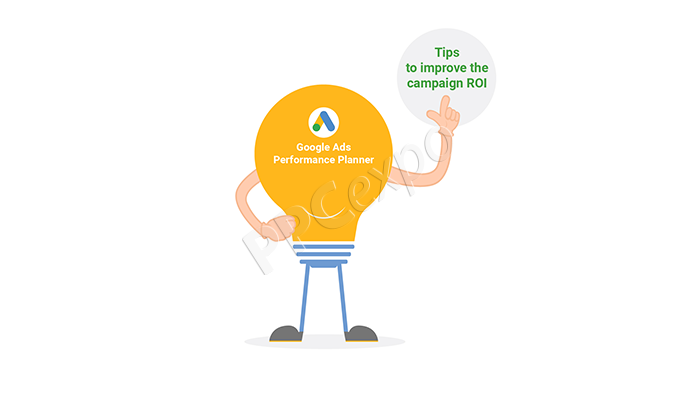US Inflation Jumped 7.5 in in 40 Years
US consumer inflation accelerated last month to a fresh 40-year high, boosted by surging costs for gas, food and housing. The sharp increase reflects a surge in energy prices spurred by Russia’s war on Ukraine.
But it also reflects robust demand for goods and services and bottlenecked supply chains. Here we will discuss about rajkotupdates.news : us inflation jumped 7.5 in in 40 years.
Gasoline
The nation’s inflation rate accelerated last month to a fresh 40-year high, hammering consumers and wiping out pay raises. The Labor Department said Thursday that consumer prices rose 7.5% compared with a year earlier, the steepest increase since February 1982. Prices jumped across the economy, including higher food and gas, apartment rents and airline fares.
Prices of almost all categories climbed faster than they did in January, but the most dramatic surge was for gasoline. A gallon of regular now costs $4.64, up from $3.99 in January. Prices of most other fuels also rose, with gasoline up 38% over the past 12 months and electricity up 13%. The jump in energy costs has pushed the inflation rate for goods and services to its highest level since January 1980.
At a bakery in Atlanta, Shirley Hughes is raising the price of her cakes and other items to offset the cost of rising food and gas prices. She has also changed her shopping habits and taken on extra shifts at work. “It’s a constant struggle,” she says. “It’s getting hard to afford the things that I need.”
The latest rise in inflation comes as US consumers are feeling squeezed by a slowdown in hiring, sinking real wages and higher food, shelter and energy prices. The acceleration of consumer prices has heightened expectations that the Federal Reserve will start to raise interest rates aggressively this year to try to cool borrowing and spending. The Fed’s policy committee meets this week to discuss its next move.
Food
Consumer prices jumped at their fastest pace since February 1982, driven by steep rises in food and energy costs. Prices also increased for furniture, apartment rents and airline fares. Inflation is hammering consumers, wiping out pay raises and driving up borrowing costs for businesses. It poses a major threat to President Joe Biden and congressional Democrats as they try to retain thin congressional majorities in the midterm elections next month.
The Labor Department’s report on Wednesday showed the Consumer Price Index rose 8.1% last month from a year earlier, faster than the 8.3% increase economists expected. Excluding volatile energy and food prices, so-called core inflation increased 5.9%, the most since November 1981.
Prices climbed in September for nine of the 13 categories that make up the CPI. The largest year-over-year increases were for meat and poultry ($9.5 percent), eggs ($6.6 percent), dairy products ($5.1 percent), fats and oils ($4.8 percent) and processed fruits and vegetables (10.1 percent). Prices also climbed for grains, beverages, nonalcoholic beverages, cereals and bakery goods and other foods.
The spike in prices is due to several factors, including heavy demand and shortages of supplies in many sectors of the economy. Workers are demanding pay raises, and that’s causing companies to raise prices for their goods and services. Shortages of parts and workers at ports have pushed up freight costs. And soaring prices for oil, wheat, grains and metals – especially aluminum and nickel – have driven up costs for the products that go into cars, clothes, computers and other items. All of these factors should push inflation higher for the rest of the year. That will likely give the Federal Reserve more reason to keep raising interest rates.
Clothing
The Labor Department reported Thursday that consumer prices jumped 7.5% last month compared with 12 months earlier, the steepest year-over-year increase since February 1982. Bottlenecked supply chains, heavy doses of federal aid and robust consumer spending have combined to push prices across the economy.
The most prominent price increases have been in gasoline, food and housing, where inflation has squeezed consumers and wiped out many of the pay raises they’ve received this year. But the surge in prices has been widespread, extending to everything from bedroom furniture to airline fares.
While some economists believe prices will ease in 2022, others expect them to remain elevated for months to come. That’s because the coronavirus pandemic hasn’t yet produced enough of a recovery in supplies to lower prices on a year-over-year basis, PNC chief economist Gus Faucher says.
Moreover, many companies have been raising prices to keep their profits in line with rising labor costs. That’s especially true for companies that use a lot of outsourcing to low-wage countries. And as the labor market tightens, workers will demand higher wages, which companies will also have to cover by boosting prices.
Nevertheless, Bankrate’s McBride thinks interest rate hikes, which the Federal Reserve is expected to enact this month, won’t help reduce inflation much. That’s because the trends that have pushed prices so high—labor shortages, parts shortages, higher shipping costs and robust consumption—will continue to play out. The only question is how quickly they’ll do so. The answer may depend on whether President Trump’s infrastructure plans can get off the ground. That could speed up the delivery of construction materials and make home construction more affordable. That would help alleviate the pressure on housing, which has risen faster than any other segment of the economy.
Health Care
The prices of health-related goods and services jumped by the steepest year-over-year pace in the consumer price index since February 1982. That was largely due to costs for doctor visits, hospital stays and prescription drugs. Medical-care prices have been rising faster than most Americans had expected. Until recently, many economists and business leaders had hoped that as the Omicron variant subsided, supply chain snarls loosened and vaccination rates rose, prices would start to drift downward.
Inflation is squeezing families across the country, and in different ways. For lower-income and black and Hispanic Americans, who spend a greater percentage of their incomes on necessities, it’s especially painful. They’re already paying more for food, gas, rent and child care. And now, higher utility bills and the cost of new or used cars are squeezeing their budgets as well.
Prices also are climbing in the pockets of those who make the most money, causing some to question the value of their government-issued vouchers that can be used to buy groceries and gas. In addition, a growing number of employers are raising their paychecks to match inflation. Still, a rebounding job market has helped keep some Americans above the poverty line. But the rest are struggling, with millions forced to cut back on discretionary spending like vacations and new clothes. The latest data from the Labor Department show that overall consumer prices rose 0.6% in January and 7% compared with last year, while core CPI — which strips out volatile food and energy prices — rose 0.4% and 6%, respectively. Both numbers exceeded expectations and were the highest in 40 years. Despite the surge, inflation remains below the Fed’s 2% target and is a far cry from the hyperinflation that gripped America in the 1970s and early 80s.
Housing
The steady rise of prices is weighing on Americans’ wallets, undermining consumer confidence and threatening the jobs of workers in low-wage industries. It also poses a test for policymakers at the Federal Reserve and President Joe Biden’s Democrats as they seek to retain thin congressional majorities in midterm elections later this year.
Thursday’s Commerce Department report showed that consumer prices accelerated in January for the fourth consecutive month, putting the annual rate of increase at its highest since February 1982. The acceleration was broad-based and included everything from food and furniture to apartment rents, airline fares and electricity.
Consumer prices rose 0.6% from December to January, beating expectations and the most since October 2021. The core consumer price index, which strips out volatile energy and food costs, climbed 0.5%. The rise in inflation is expected to push the Fed to raise short-term interest rates multiple times this year, with its first hike almost certainly coming next month.
Higher interest rates, however, could slow the economy and make it less able to absorb rising prices. That’s why economists say it’s important that the Fed take its time to lift rates so the economy can get back on solid footing.
While the median American household’s income barely keeps pace with inflation, that’s still far behind what is needed to buy things like homes and cars. Many economists expect prices to fall soon, as supply chain issues work themselves out and wage increases catch up with inflation. But if the inflationary pressure continues to build, it will be increasingly difficult for the Federal Reserve to keep raising rates without causing a recession. For now, the Fed is expected to raise its key short-term interest rate by a quarter of a percentage point at its next meeting on March 1. The move is widely expected to be followed by several more quarter-point hikes through 2022. To know more about rajkotupdates.news : us inflation jumped 7.5 in in 40 years just follow us.


















